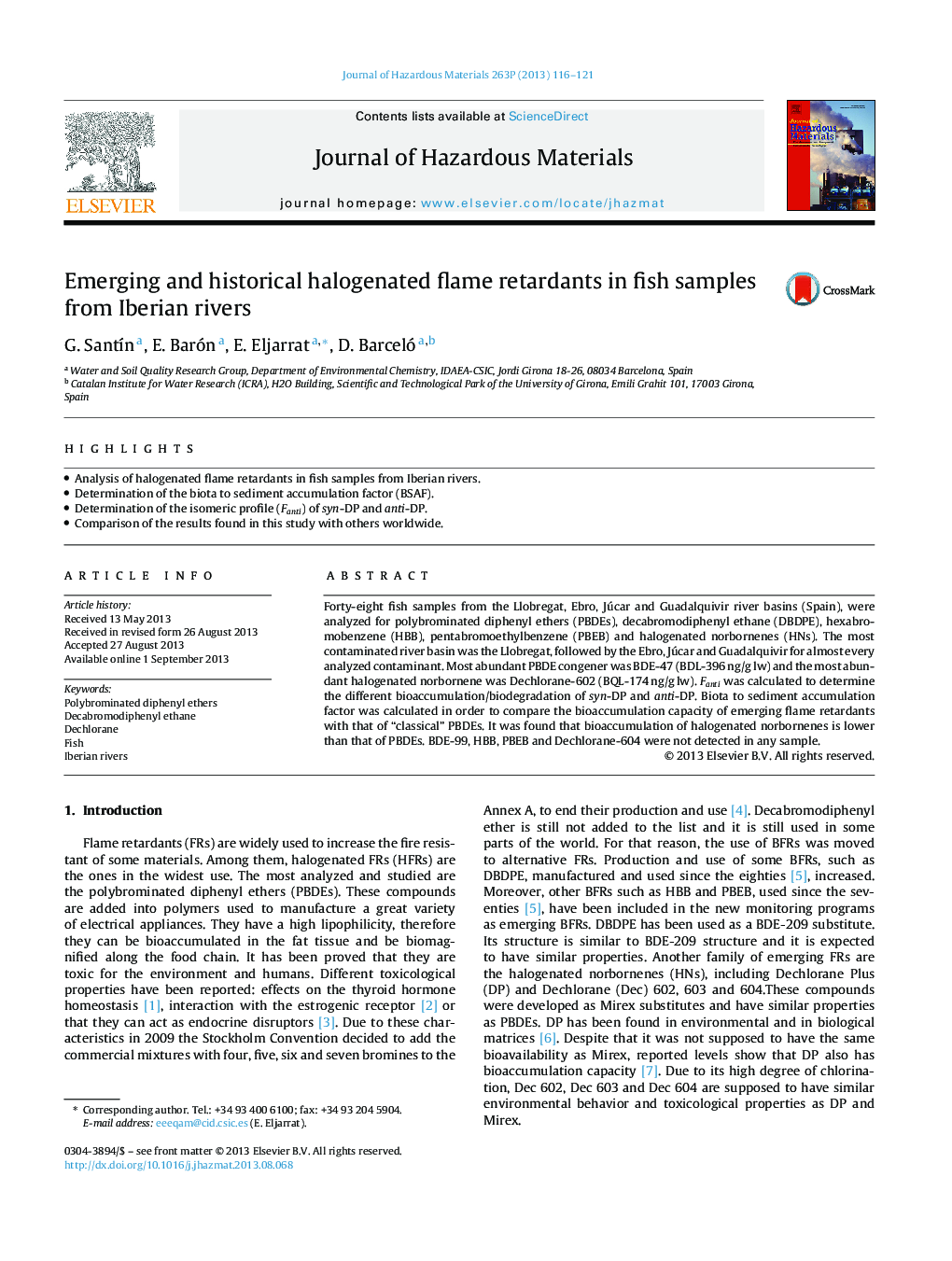| Article ID | Journal | Published Year | Pages | File Type |
|---|---|---|---|---|
| 577083 | Journal of Hazardous Materials | 2013 | 6 Pages |
Abstract
Forty-eight fish samples from the Llobregat, Ebro, Júcar and Guadalquivir river basins (Spain), were analyzed for polybrominated diphenyl ethers (PBDEs), decabromodiphenyl ethane (DBDPE), hexabromobenzene (HBB), pentabromoethylbenzene (PBEB) and halogenated norbornenes (HNs). The most contaminated river basin was the Llobregat, followed by the Ebro, Júcar and Guadalquivir for almost every analyzed contaminant. Most abundant PBDE congener was BDE-47 (BDL-396 ng/g lw) and the most abundant halogenated norbornene was Dechlorane-602 (BQL-174 ng/g lw). Fanti was calculated to determine the different bioaccumulation/biodegradation of syn-DP and anti-DP. Biota to sediment accumulation factor was calculated in order to compare the bioaccumulation capacity of emerging flame retardants with that of “classical” PBDEs. It was found that bioaccumulation of halogenated norbornenes is lower than that of PBDEs. BDE-99, HBB, PBEB and Dechlorane-604 were not detected in any sample.
Related Topics
Physical Sciences and Engineering
Chemical Engineering
Chemical Health and Safety
Authors
G. SantÃn, E. Barón, E. Eljarrat, D. Barceló,
